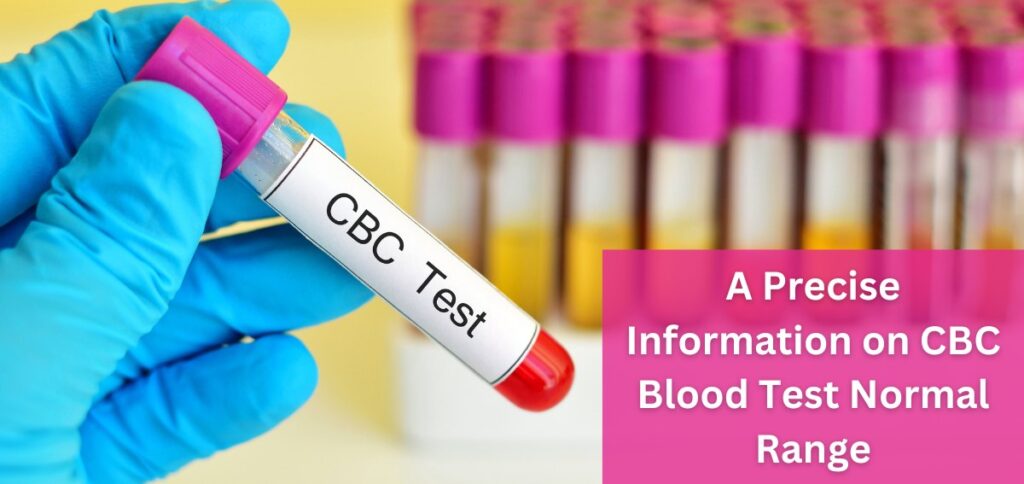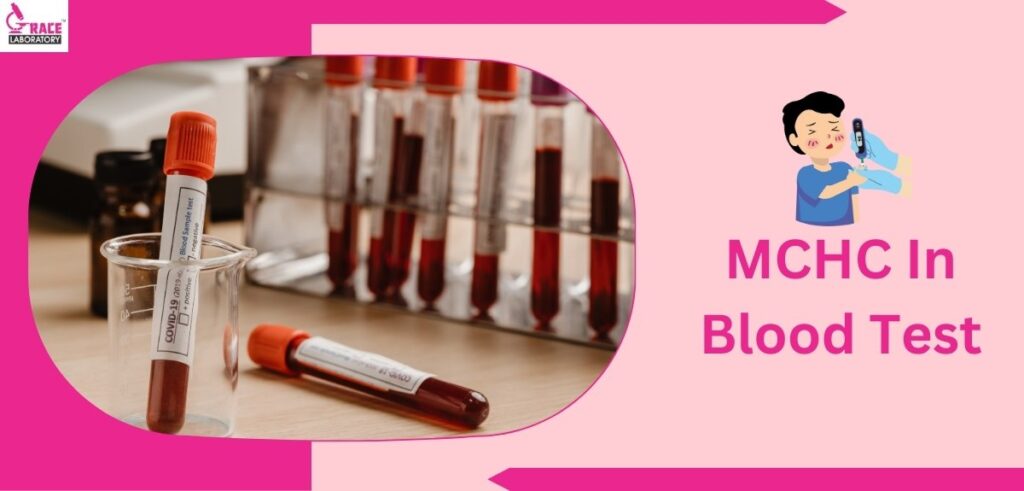Do you know there are approximately 100 types of Blood Tests that give a snapshot of your overall health? The diagnostic blood test provides 90% accurate results about the infections and diseases caused. The test results measured differ from one laboratory to another.
The important part of the document is on CBC Blood Test Normal Range. The full form of CBC is a Complete Blood Count which is the most significant diagnostic test that measures the size and various components of the blood- fluid. The blood is the most important part of our circulatory system which contains a complex mixture of several proteins and ions. The fluid connective tissue( Blood) has four main components namely red blood cells, white blood cells, hemoglobin, and platelets. The CBC reports measuring the blood component counts.
An Overview of the Content- The article provides you with a complete synopsis of the CBC Blood Test Normal Range analyzing the complete track on how well your organs and tissues are working. Please note that even if you are properly fit and healthy, still you need to undergo the Complete Blood Count test to prevent the risk of any serious developing health conditions. In addition, the following article will also provide you with more specialized and accurate information about the requirements and importance of a CBC Blood Test. Moreover, the document will give you a constructive idea about the top-most leading Blood- test center of Gujrat below.
Why Do You Require a CBC Blood Test?
Human disease, viral infections, and public health issues have become an everyday topic of discussion resulting in many severe cardio-respiratory health concerns and disorders. Our quality of life has facilitated susceptibility to infections and chronic heath diseases. Addressing such medical problems that are weakening your immune system, a CBC test is required to diagnose your overall medical conditions and provides a complete picture. Moreover; before going further, let us quickly understand what is a CBC test.
A complete blood count test is substantially a diagnostic evaluation and measurement of your red blood cells, white blood cells, and platelets which should be considered as an important part of the routine check-up. The diagnostic routine blood test entails valuable insights into blood disorders and various medical health problems like anemia, cancer, acute lymphoblastic leukemia, thalassemia, etc. The CBC test report has two columns that consist of the components and numeric reference range numbers.
What is the procedure of CBC Test- The practicing healthcare doctor will collect the sample of your blood by inserting a needle and sending it to the laboratory. The specialized doctor will look at the blood- sample and then measure the size of the blood cells under a microscope determining the exact amount of red blood cells, white blood cells, and platelets. The results based on your CBC report can give blood-related conditions like anemia, Erythrocytosis, Leukocytosis, Leukopenia, Thrombocytosis, and thrombocytopenia.
Please scroll down to know the reference CBC Blood Test Normal Range below in the paragraph.
What Does a CBC Blood Test Normal Range Look Like
India has the largest young population, and despite this fact, several health-related problems are of serious concern. The developing long-term disease alignments are emerging at a very early age. The importance of health and wellness should be taken into deep consideration and a CBC report helps in drawing attention to many chronic health-related conditions. Furthermore, there are no special instructions to be followed before and after the CBC blood test. A complete Blood count test should be a part of your routine check-up as it is a simple test-qualified result that aids the following Test Details as mentioned below. It is a very safe blood test with no risk of infection during CBC blood test.
Subjecting to the topic, please go through the CBC Blood Test Normal Range-
- Red Blood Cells Counts- As we know red blood cells are responsible for carrying oxygen from the lungs throughout our body. The Red Blood Corpuscle is an essential part of keeping your body alive. The normal range of RBC in males should be 4. 35 trillion to 6 trillion cells and in females it should measure from 4 trillion to 5.13 trillion cells/L.
- Hemoglobin- The normal Hb level in males should measure up to 18g/ dl; whereas in females it should count up to 12- 16g/ dl. Low hemoglobin can cause anemia along with tiredness, difficulty in breathing, and chest tiredness.
- Hematocrit-The normal percentage of blood in males should be 40 to 55%; whereas the figure is determined in between 36 to 48% in females. Lower hematocrit can lead to a decrease in the level of blood cells and an elevated number may indicate polycythemia and erythrocytosis. Hematocrit stands for Hct.
- Mean Corpuscular Value is Low- The MCHC value indicates the amount of Hb per unit volume and changes in MCHC value are generally because of the normal aging process. The average size of the red blood corpuscles is calculated as MCH= Hct*10/ RBC. The high MCHC level can usher in liver problems and loss of appetite. In many cases, it can lead to thyroid and anemia. The normal Mean Corpuscular Value should be 27 to 31 picograms and an underlined lower level can cause iron-deficiency anemia health conditions.
- Platelets Count- Platelets are the tiny cells within our blood that help stop bleeding at the sight of injuries. The platelets play an important part in forming a blood clot through a complex activation process of hemostasis, thrombosis, and wound healing. The normal platelet counts in an adult should be around 150,000- 400, 000 ml. The high platelet levels can block the blood flow in your body called thrombocythemia and platelets less than the normal conditions can lead to bruises and excessive bleeding.
- White Blood Cells Count- These are the major part of the immune system and act as a general army that travels through your bloodstream and tissues. They fight invaders and unknown organisms and destroy them to protect your body from any injury and illness. The white blood cells are extremely tiny colourless cells examined under the microscope. The white blood cells produced in our bone marrow should count up to 18,000/ mm3, and an elevated number above 20,000/ mm3 can lead to inflammation and some chronic health conditions. The health condition is called Leukocytosis. However, the low white blood cells are more alarming and dangerous and can lead to frequent infections in the body.
The Different Types of White Blood Cells Are-
- Neutrophils- The normal range of neutrophils should be between 2,500 and 7,000 per microliter of blood. They are the most abundant white blood cells. A count above the normal level can result in bowel disease, rheumatoid arthritis, and hepatitis. A count below the normal range can weaken your immune system.
- Monocytes-The leukocytes help in eliminating germs, bacteria, viruses, and protozoa. The normal counts of white blood cells residing in the cell should be between 2%- 8% in a healthy adult. The high count can cause complex autoimmune diseases like lupus with actually no care. The low monocyte count in our busy can cause bloodstream infections such as bacterial sepsis.
- Lymphocytes- This type of white blood cell fights cancer and responds to infectious microorganisms. The lymphocytes are fundamentally important for white blood cells and are the major components of the Complete Blood Count test( CBC). The normal range lymphocyte ranges between 3000 to 9000 in every one microliter of blood. The elevated lymphocyte count can lead to viral and bacterial infections; whereas low counts can cause lymphopenia.
- Eosinophils- These are other types of white blood cells that support our immune system. Depending on the eosinophil; counts, the body produces a high, abnormal number or an equal to 500 eosinophils. High eosinophils can cause organ damage and low eosinophils can lead to low blood pressure.
- Basophils- They are the largest type of granulocyte and they are very small in terms of percentage and usually count 55 to 1% of the white blood cells. The increased number can lead to autoimmune inflammation and a drop in the count can cause allergic anaphylactic reactions.
Moreover, please note that the normal range of CBC may slightly vary from one pathology to another; however, the report can effectively measure the amount of high RBC, hemoglobin, and hematocrit along with diagnostic health conditions.
The Abridgement
However, there is certainly no risk and complication during any kind of blood test procedure and venipuncture citation yet get your blood test performed from a reputed blood-test center/ laboratory. Normally, the blood- samples are obtained through a needle finger-prick method called Venipuncture.
Grace Laboratory- Before you decide to go for the blood test; I request you to consider the verified Grace Laboratory in Vadodara, Gujarat for this. The blood- clinic center has become the leading name for providing appropriate accurate results from well-trained practicing doctors and lab professionals. Moreover; you can trust the center for a complete and correct diagnostic process for bringing the CBC Blood Test Normal Range back to normal.
Conclusion- The above article highlighted the importance of CBC blood tests and brought attention to the salient features of Grace Laboratory where you can get the complete blood test from the leading practicing healthcare doctors working there under one- roof. The blood test results obtained are written out numerically; hence, the document also explains the proper reference range in depth indicating your health concerns. Therefore, we can conclude this article by saying that Yes, CBC Blood- Tests play a significant role in examining the value of chemicals, nutrients, and other valuable substances present in your body.
Linchpin the CBC Blood Test Normal Range to bring a better tomorrow.






